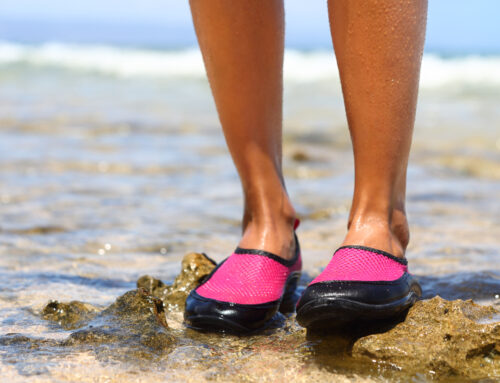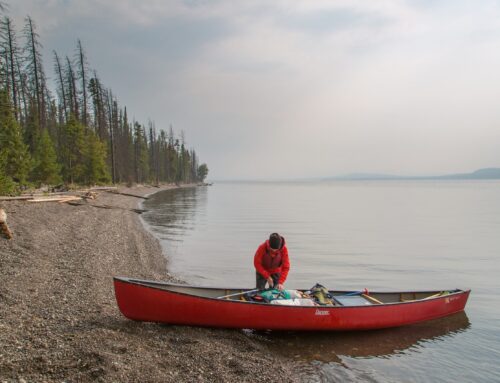Updated October 27, 2022
There is no denying the progress of the overall ski industry in many respects. The way we think about, build, and use skis has changed drastically since the sport’s early days. The most rapid changes have happened in the last 10-15 years, and have resulted in numerous different types of skis.
While all of this innovation is great, it has created an overwhelming number of choices for skiers. For many, buying skis has turned into a grueling task that requires hours of sifting through websites at the risk of information overload. To help narrow down your search and save you a headache, we’ve created a guide to the most common types of skis. This article will give you some insight into the different categories, shapes, and specific uses of a variety of skis, along with tips for buying skis online so you can find the perfect pair hassle-free.
Going Skiing? Check out these awesome skiing resources:
- Skiing for Beginners: 15 Tips & Secrets for a Successful First Ski Trip
- What to Wear Skiing & Snowboarding: Essential Clothes for the Slopes
- 30 Totally Genius Gifts for Skiers & Snowboarders (2022 Edition)
- Best Ski Gloves for Warm Hands at Any Budget (2020)
- Best Women’s Ski Jackets for Warmth & Performance (2020-2021)
Main Types of Skis
All-mountain
Also known as the “one quiver ski,” this type should be able to be used in any conditions on any mountain. However, it differs person to person based on skill level, terrain and personal preference. An all-mountain ski is typically stiff enough to boost through hard pack and chunder (choppy, inconsistent snow), yet playful enough to enjoy on a nice spring day. These types of skis are also wide enough to float on sleeper powder days, but narrow enough to not feel like boats on groomers.
One could also argue that there is a subcategory of all-mountain skis called big mountain skis. They share similar qualities of being skiable on different types of snow, but they are usually on the stiffer side to help stomp big cliffs and power through icy turns and moguls.
Powder
While a solid all-mountain ski will get you through powder days, it could be worth it to invest in some powder skis if you live or ski in an area prone to massive storms and light snow. The main difference between all-mountain and powder skis is the width, as wider skis help you stay on top of fluffy powder better.
Park
If you’re a dedicated park rat, then a good pair of park skis will help you out immensely. Park skis are usually a little more narrow and softer, so they feel more playful coming off jumps and spinning. Some prefer a shorter park ski for a better feel underfoot, more control in the air, and ease of maneuvering.
Racing
Unless you’re a racer, you probably want to leave these types of skis alone. Race skis are made to be less forgiving, more aggressive and very stiff. While they can be fun to carve on groomers, they’re not the best for beginners or everyday use.
Touring/Backcountry
Backcountry skis are made to go both uphill and downhill. Most tour skis are made with an all-mountain prototype, but they are slightly more bare bones to make trekking up mountain peaks easier.
Main Shapes and Configurations of Skis
In the modern ski world, there are a variety of ski shapes and configurations that determine what style of skiing they’re best for. Something as simple as a small tweak in a ski’s configuration can make for a totally different experience. To figure out what shape and configuration you should choose, think about the type of terrain you ride, the type of snow that falls in your area, and your overall level of confidence on the hill.
Camber vs Rocker
Camber and rocker refers to the shape of your ski, and they are the staple shapes of modern skis. Camber means that the ski is in a slightly convex shape from tip to tail, which brings the middle of the skis away from each other. A rocker is the opposite, where the tips and tails are slightly curved away from each other.
Camber helps the edges stay in contact with the snow, and a simple camber ski is good for skiing hard packed or groomed snow. The camber grips the snow and initiates your edge instead of floating on top of it, making for a stiffer and more stable ski.
In contrast, rockered skis will float more efficiently on snow. Rockered tips and tails will help you stay on top of deep powder without being in the backseat. This allows you to make quick turns through the trees because there is less of the ski touching the snow. The drawback is that the rocker makes the skis softer, which will give you less stability on hard packed terrain.
Many all-mountain skis are made with both camber and rocker shapes because they’ll be trustworthy in a variety of conditions. For example, it’s common for an all-mountain ski to be cambered underfoot and rockered in the tip and tail (mustache rocker). This allows you to get that surfy feeling in the deep snow while retaining some sturdiness in the back.
Sidecut
Sidecut is the curve that appears in the middle of the ski between the widest point in the tip and the widest point in the tail. Skis are usually not perfectly straight, but rather have a natural curve from widest in the tip, to narrow under foot, to wider in the tail.
This is important because a ski with a long turn radius is designed for bigger turns and they take more power to turn. A ski with a short turn radius, on the other hand, is made to turn quicker and easier.
Stiffness
Generally, a stiffer ski will feel more stable on hard-packed and groomed snow. However, they can be harder to ride because they are less forgiving on moguls and bumps. You might feel yourself working extra hard on stiffer skis to stay centered and not in the backseat.
Less stiff skis will feel more playful and give you a little more room for error. Essentially, they will move and bounce with the snow more naturally, but this can take away from your ability to power through turns. They also have a tendency to chatter or flop around at high speeds.
Length and Width
There is no sure-fire way of finding the perfect length and width, but generally the taller/heavier you are, the longer the skis you want. Taller people are able to create more leverage to turn the ski, and longer skis distribute weight more efficiently. It’s also important to note that the ski industry is trending towards longer and wider. Don’t forget to take into account the rocker and sidecut, because they are factors that can make the ski feel shorter.
As mentioned earlier, wider skis will float better, but they are heavier and harder to maneuver. Wider skis are usually rockered because they are meant for deeper snow. This means they will ski shorter and have less of an edge. More narrow skis will usually have camber and a longer edge because they are made for skiing groomers/hard pack.
Which Skis To Use and When
Based on all of these variables, it can be very difficult to know what skis you should use and when. To help you decide, here are several scenarios to show which skis would be best in different situations:
- Powder day: wide (115mm+ underfoot), rockered tips or full rocker
- Hard pack/groomer day: ~100mm underfoot, camber (underfoot or full), possible tip rocker
- Park: less than 100mm underfoot, rockered tip and tail, possible camber underfoot
- Variable snow conditions: 100mm+ underfoot, full camber, rockered tips
Best Skis for Beginners
The best types of skis for beginners are ones that won’t make you work too hard but are demanding enough to start you off with good habits. You want them to be somewhat comfortable, yet challenging enough for continuous improvement.
The right pair of beginner skis can really make a difference in your rate of progression. We’d recommend something on the narrower side, with an even flex pattern and a smaller (but not too small) sidecut. You also want them to be decently forgiving so your quads aren’t burnt out by the third run.
Where to Buy Skis Online
The great thing about online shopping is that there are so many resources. To start out, you can check any brand’s website like Armada, K2 or Moment, but there are also discount sites that have older models and sales like Evo, Backcountry, and Ski Essentials. Another great resource is Curated, where you can chat with an expert to find something to fit your personal needs.
More Skiing Resources
Awesome Ski Resorts for Your Next Trip:
- 5 Top-Notch Places for Snowboarding & Skiing Near Denver
- 12 Amazing Places to Go Skiing Near Los Angeles & Southern California
- 14 Amazing Places to Go Snowboarding & Skiing Near Chicago
What to Wear Skiing:
- Waterproof outerwear – Possibly the most critical pieces of clothing for your ski trip packing list is durable, waterproof outerwear. Burton and Helly Hansen are famous ski brands for having best-in-class clothing that will keep you warm in the coldest, snowiest conditions. Click here to shop ski jackets and compare prices.
- Thermal layers – Thermal baselayers are absolutely critical for a smooth skiing experience, as these will keep you warm and dry underneath your outerwear. The best kinds of thermal baselayers are made of Merino wool, which is moisture-wicking and comfortable. Our favorite brand of thermal layers is SmartWool – their tops and leggings are soft, lightweight, but warm and durable for all kinds of outdoor activities, including skiing. Click here to shop thermal tops and leggings and compare prices.
- Ski goggles – No ski trip packing list would be complete without a pair of fog-resistant ski goggles, especially if you’re going somewhere that makes artificial snow. Ski slopes often have snow blowing into the air several times a day and it can be hard to keep freezing snowflakes out of your eyes, even during clear days. We use and recommend these ski goggles. However, you can shop ski goggles and compare reviews/prices here.





